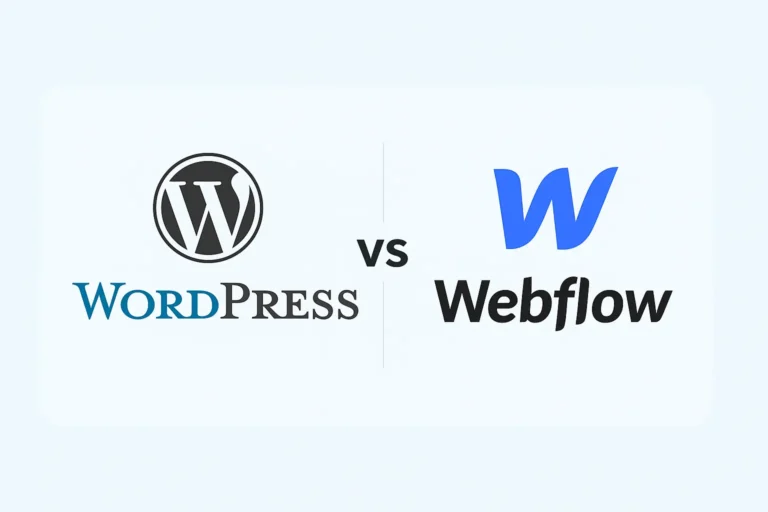Table of Contents
In today’s busy online world, people don’t hang around. If your website doesn’t make an impression quickly, they’re off to your competitor quicker than you can blink. Recently, Mitchell Brown and Ben Temple Wilson, the brains behind Norwich’s very own Temple Brown digital agency, sat down with local legend Chris Reeve from Reeve Social Media for a no-nonsense chat about what can really make websites tick.
They got stuck into the nitty-gritty of how psychology shapes web design, why clarity is the unsung hero of online success, and how these ideas have helped local businesses smash their goals, including a cracking tale from The Best Intensive driving school in Norwich. Fancy knowing what really works? Here’s the lowdown.
Watch or Listen: Catch the Full Chat with Chris Reeve
If you want to hear the full conversation straight from the horses’ mouth, you can watch the video below or listen to the podcast on Spotify.
If you prefer to listen on the go, check it out on Spotify here:
Listen to A Coffee with Chris on Spotify
Why Psychology in Web Design Isn’t Just Fancy Jargon
Ben kicked off with a reality check we can all agree on: no one’s got time to faff about anymore. “People’s attention spans? Shrinking faster than a woolly jumper in the wash,” he said. “If your website doesn’t show visitors what they want in seconds, they’ll be gone before you can say ‘hello.’”
That means Norwich businesses can’t just slap up a pretty site and hope for the best. Your site needs to understand how people behave online, like knowing when to catch someone’s eye and when to gently nudge them towards hitting that buy button.
Clarity: The Secret Ingredient Your Marketing’s Been Missing
Mitchell then threw in a golden nugget: before you start splashing cash on fancy design or tech, ask the big question: what’s your business actually trying to achieve?
“We work backwards from the business plan,” he said. “Are you selling a product? Collecting leads? Telling a story? Knowing that shapes everything we do.”
It’s easy to get caught up in shiny new websites, but Mitchell and Ben know that without crystal-clear goals, you’re just fiddling around in the dark. As Ben put it best: “You don’t have a marketing problem, you have a clarity problem.” Simple, but spot on.
The Round Table: Where the Best Ideas Win (No Egomania Allowed)
What sets Temple Brown apart? Their “round table approach.” Mitchell explained how they ditch the usual office hierarchy and sit everyone down as equals…the freshest ideas win, full stop.
“No egos, no royal decrees. Just good, honest collaboration,” he said. “Everyone owns their bit of the project, and that’s how you get websites that aren’t just pretty but actually do their job.”
It’s a bit like a pub quiz team where everyone chips in, but instead of trivia, it’s about making websites that work for real businesses in Norwich and beyond.
How Temple Brown Helped Norwich’s 'The Best Intensive' Rev Up Their Website (And Their Sales)
Nothing beats a good success story. Mitchell shared how they took on The Best Intensive, an intensive driving school based right here in Norwich.
The problem? Despite glowing Google reviews and a solid rep, their website was a bit of a mess. Confusing booking steps, mixed-up colours, and important info buried so deep you’d need a map and a torch to find it.
Using clever tools like heat maps, Temple Brown found out where visitors were getting lost, and where they weren’t clicking at all. The fix?
- The all-important promo video got moved front and centre, so it plays straight away no matter your device.
- A nifty toggle button let users pick Norwich or Bristol courses without endless scrolling.
- The booking process was chopped from six steps to just three…simple, quick, done.
- Colours and branding got tidied up to look sharp and consistent.
The result? Orders jumped from a measly 5–6 a week to a steady 20+, and their SEO went through the roof. Mitchell reckons it was “more than a redesign, it was a proper business makeover.”
Words Matter: How Temple Brown Find the Perfect Balance
Chris asked the million-dollar question: how much content should your website have? Ben and Mitchell weren’t shy with the answer.
“It’s not about cramming in as many words as possible,” said Mitchell. “It’s about answering real questions your customers are asking. We do deep digging to find out what people want to know and then make sure your site speaks their language.”
Ben added, “Some websites are all flash and no substance; others are like an encyclopedia on every page. The trick is to strike a balance; clear, punchy copy with enough breathing room so visitors know where to look next.”
That’s how Temple Brown make sure you’re found and trusted.
No More Guesswork: Data-Driven Design That Works
Mitchell revealed how they use heat maps and data to take the guesswork out of web design.
“We can see exactly where visitors click and where they don’t,” he said. “If something’s being ignored, we ask: Is the call to action missing? Is the message wrong? Then we tweak and test.”
It’s like having a compass that points straight to what needs fixing, saving you time and money on wild redesigns that don’t move the needle.
Common Website Mistakes That Need To Stop Yesterday
Ben’s advice? Stop stabbing in the dark.
“Loads of businesses guess why their websites aren’t working,” he said. “They make changes without real insight. That’s like trying to fix a car by whacking it with a hammer.”
His advice: lean on data, get clear on the problem, and fix the right thing the right way.
Bringing Back the Design Obsession: Why It Still Matters
While Mitchell and Ben’s chat rightly zoomed in on psychology, clarity, and data, Temple Brown’s story wouldn’t be complete without a nod to their proper design obsession. After all, good design is where form meets function, and that’s something Temple Brown live and breathe every day.
Design isn’t just about making things look pretty (though it’s always a nice bonus). It’s about crafting an experience that feels right for your audience, matches your brand perfectly, and works hand-in-hand with the psychology and clarity they talked about.
In fact, their careful eye on spacing, typography, colour palettes, and visual hierarchy amplifies the clarity they aim for. It helps guide the eye, calm the mind, and makes every click feel effortless. This design obsession is the secret behind the websites that don’t just sit there but actually deliver results.
Design Without Clarity is Just Decoration Without Direction
It’s tempting to focus on flashy visuals or clever tech, but without clarity and psychological insight, even the prettiest website can fall flat. On the flip side, clarity without thoughtful design can feel cold and off-putting.
At Temple Brown, design and psychology aren’t separate worlds…they’re two sides of the same coin. That’s why they don’t just build websites that work, they build websites that feel right.
Temple Brown’s Top Tips from the Chat with Chris Reeve: A Quick Summary
If you’re short on time but want the key points, here’s what Mitchell and Ben want every Norwich business owner to remember:
- Psychology matters — Your website has seconds to grab attention and guide visitors.
- Clarity is king — Start with crystal-clear business goals.
- Collaboration wins — The round table approach means best ideas take the spotlight.
- Data is your friend — Heat maps and analytics tell the real story.
- Keep it simple — Streamline journeys and speak your customer’s language.
- Stop guessing — Test, learn, and improve with insight.
Ready to Make Your Website Work Smarter, Not Harder?
Whether you’re starting fresh or stuck with a site that’s going nowhere fast, Temple Brown have the know-how to get you back on track. Why guess when you can have clarity?
Give Mitchell or Ben a shout on LinkedIn, or visit templebrown.co.uk to start the conversation today. Let’s get your Norwich business noticed for all the right reasons.




